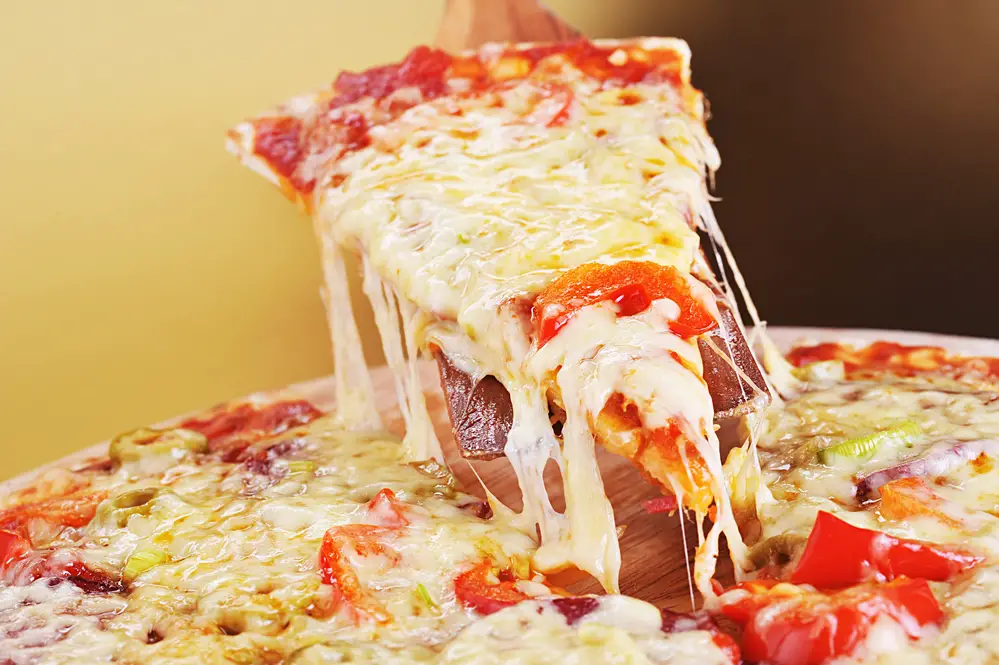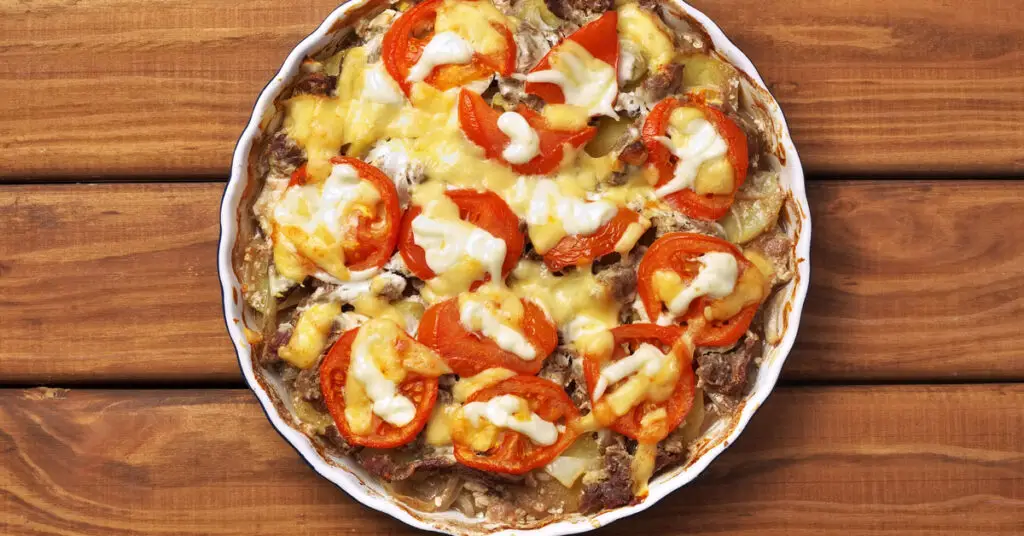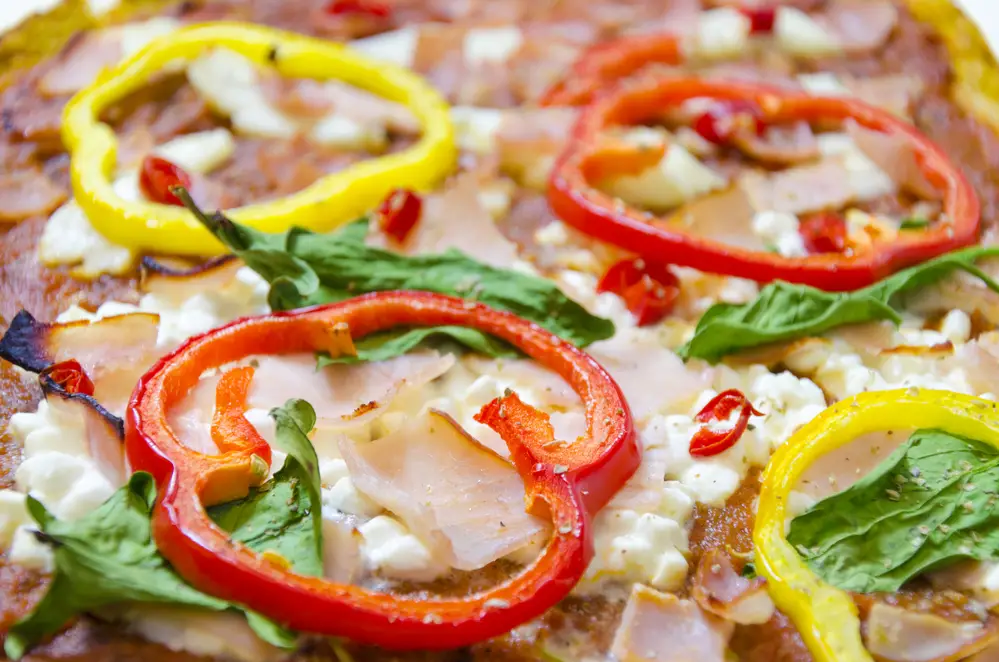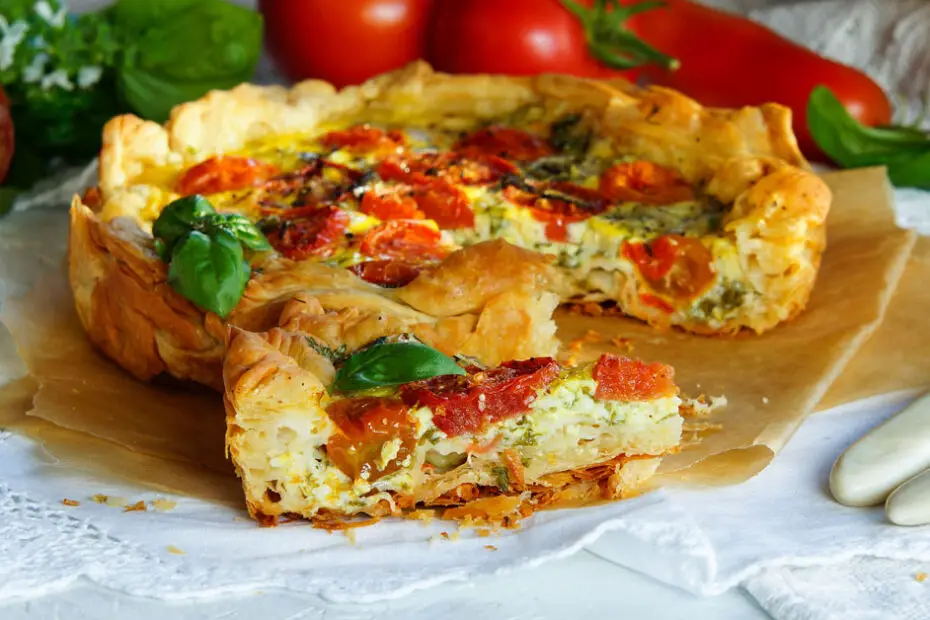Pizza is beloved worldwide for a reason: it’s both delicious and incredibly flexible to your personal tastes! There’s a pizza out there for pretty much everyone.
A crucial part of any pizza is its toppings. They create the flavor profile of your pie, and can make or break a pizza if you aren’t careful.
Luckily, we’ve created this handy guide for putting together the perfect pizza!
You might think pizza toppings are a hard thing to mess up. Sauce, then cheese, then the other stuff. Easy, right?
Except – there’s a little more complexity to it than that!
You want your toppings to all be perfectly cooked (not raw or burnt) and for your pizza to be crisp, delicious, and balanced.
In this article, we’ll break down all the information you need to put together your perfect pie. Specifically, we’ll cover:
- What order you should layer your toppings in
- Additional tips for getting a great result
- A few important FAQs when it comes to pizza making.
Let’s get cooking!
How to Layer a Pizza (6 Steps)

Of course, any good pizza starts with its dough.
Whether you’ve made it yourself or are using pre-made pizza dough, you’ll need to ensure it’s good quality. If your dough is bad, it will really limit the potential of your pizza as a whole.
If you’re making your own dough, you should pay careful attention to things like rise time, flour type, and yeast.
You should also make sure your pizza base is rolled out to the right thickness. If it’s too thin, it won’t hold your toppings properly and may burn. However, if it’s too thick, it won’t cook all the way through.
When we layer a pizza, it’s good to keep in mind how heat will affect the different layers.
The closer something is to the top of the pizza, the more heat it will receive directly. If something’s buried under other toppings, it will take longer to get to the same temperature!
This is why sauce and cheese go on the bottom, since they only really need warming through.
Step 1: Start with the Sauce
Sauce is another vitally important aspect of a pizza.
There are countless pre-made sauces available in the grocery store, and they do a sufficiently adequate job.
However, I can’t overstate the deliciousness of a great homemade sauce! If you’ve got the time to make it, I can’t recommend it enough.
You should spread your sauce thin and even over the base of the pizza.
Keep in mind that less is more when it comes to pizza sauce. Often, it may not seem like enough as you’re spreading it, but it will be once it’s cooked! The sauce tends to become thinner and spread out more when it heats up.
Adding too much sauce is a quick way to get a soupy, soggy pizza — something nobody wants.
Make sure to leave the edges of your crust exposed so they can get nice and crispy in the oven, and so your sauce doesn’t leak off onto your oven or baking sheet.
Keep in mind that you aren’t limited to just red sauce when making pizza! Some other delicious options are alfredo or pesto sauce. They’re great for creating a different flavor profile than normal, or when you just aren’t a big tomato fan.
Step 2: Add the Cheese
Next up: the cheese!
There are heaps of options when it comes time to add cheese to your pizza. Generally, the most popular choices are mozzarella, cheddar, parmesan, romano, and goats cheese.
You can either use sliced cheese as seen on classic-style pizzas, or shredded for more even coverage.
No matter what type or shape of cheese you use (and as tempting as it might be), make sure not to go overboard!
Of course, it’s all based on personal taste, but adding loads of cheese can lead to a soggy, overloaded pizza. Instead, it’s better to have a thin layer of cheese evenly distributed over your sauce.
If you’re using multiple types of cheese, make sure the high-moisture cheeses are placed on top.
If they’re buried under other cheese, their evaporating moisture will get trapped and make your pizza soggy. When they’re on top, this moisture is able to dissipate properly.
Step 3: Place Thin Pieces of Meat
Your thin meats should always go onto the pizza first since they’ll get less heat than other toppings. Generally, thinner meats will need less heat to warm all the way through.
These include proteins such as ham, pepperoni, prosciutto and bacon.
Cured meats in particular are a great way of adding a smoky, spicy flavor that goes incredibly well with tomato and cheese. It’s why the classic pepperoni pizza is… well, a classic.
Step 4: Place Thick Slices of Meat
Now you want to add your thicker meat!
Most of these should be pre-cooked, since thick meat pieces probably won’t cook all the way through in the quick, high-heat conditions that a pizza cooks at.
You’ll want these on top of your thinner proteins so they receive more heat. Some examples of popular thick meats for pizza include meatballs, sausage, chicken and mince. You could also add a more adventurous option like prawns.
Step 5: Add Low-Moisture Veggies
We split our veggies into high and low moisture for the same reason we do so with cheese.
When a vegetable is heated, its moisture will try to escape as steam. If it’s on top, it can do this easily.
If the veggie is buried under other toppings or cheese, the steam will get caught on these obstacles and release the moisture back onto your pizza. If you aren’t careful, this creates a soggy, soupy mess!
A few examples of low moisture vegetables include broccoli, bell peppers and onions.
Step 6: Add High-Moisture Veggies
Now you want your higher moisture vegetables placed on top so their moisture can escape easily.
You may want to pre-cook your high moisture veggies to curb some of their sogginess ahead of time. This allows you to separate them from any moisture they produce during cooking before they go on your pizza.
Make sure any vegetables are evenly placed over your pizza so you get some on each slice.
A few examples of high moisture veggies include cucumber, zucchini, tomato and pineapple.
Step 7: (Optional) Garnish After Baking
Ok, we lied: there’s an extra (optional) step!
There’s a few garnishes that should not be added before you bake your pizza. This is usually because their flavor or texture just doesn’t work when it’s been baked at such high temperatures.
You can add these once your pizza comes out of the oven, sprinkled on top of everything else.
Most often these are fresh herbs like basil, oregano or thyme. Some people like these dried as well.
Other options for post-bake pizza toppings include arugula, parmesan, olive oil, red pepper flakes and balsamic vinegar.
3 Extra Tips for Layering a Pizza

Don’t Overdo The Toppings
This is the greatest sin of pizza making.
If you’re anything like me, the greatest problem in cooking is that you’re often doing it while you’re hungry.
I’m starving for a delicious pizza, so I want to put every delicious thing on it. How can more deliciousness be bad?
Overloading your pizza with toppings is a great way to end up with a soggy mess. It also means your pizza will take longer to bake, and some parts may become overdone.
Of course, variety isn’t the issue here. It’s the quantity that’s the problem!
So, add as many different types of topping as you want – just make sure they aren’t overloaded.
Don’t stack toppings; instead, place them in empty spaces on your pizza. You should be able to see at least some cheese poking through your toppings at the end.
If you can’t, you’ll risk smothering your cheese entirely and stopping it from warming through completely.
Don’t Add Too Many High-Fat Or High-Moisture Ingredients
You should be aware of which toppings you’re choosing for your pizza.
Using a lot of high-moisture or high-fat toppings could mean you get a swimming pool rather than a pizza, with all that water or grease forming a puddle in the middle.
This isn’t appetizing, to say the least!
Most often, this occurs with fatty meats like pepperoni or sausage, or with watery veggies such as pineapple and zucchini.
If you’re using these ingredients, stay aware of how many you add and try to space them out across your pizza.
Pre-Cook Certain Toppings

There are a few reasons you should pre-cook some of your pizza toppings.
By cooking your meat toppings beforehand, you ensure they’re cooked all the way through – essential for meats like pork, beef and chicken.
These thick pieces are unlikely to cook all the way through on a pizza. For health reasons, you should always make sure these meats are fully cooked.
Pre-cooking meat also ensures it doesn’t lose all its interior moisture in the extremely high-heat environment of a pizza oven.
You can also cook your high-moisture vegetables beforehand. This helps release more of their moisture before they’re sitting on top of your pizza, meaning your crust is less likely to become soggy and sad.
It also means that hard, slow-cooking veggies like sweet potato or broccoli are fully cooked through.
FAQs
What goes on a pizza first?
There are some exceptions, but sauce should typically be the first thing to go on your pizza.
It requires the least heat out of all your toppings and creates a nice base to hold all your other components in place.
What pizza toppings should I pre-cook?
The most important ingredients to pre-cook before putting on a pizza is meat like chicken, pork, or beef to ensure they are fully cooked through.
You can also pre-cook high-moisture vegetables to avoid them making your crust soggy.
Should pizza be left to cool before slicing?
You don’t need to leave your pizza to get completely cold before slicing it, but allowing it to rest for 5-10 minutes can be a good idea.
This helps the toppings on it “set”, meaning they’re less likely to slide off your slice.
How do you stop pizza toppings from sliding off?
There are a few ways of stopping the infamous cheese slide.
You could use a thicker sauce, add cheese on top of your other toppings, or let your pizza rest for a while before slicing. You should also avoid overloading your pizza with toppings when making it.
Should I pre-bake my pizza base?
Pre-baking your pizza base is generally a good idea, especially if you like crispy pizza crust.
It also creates a barrier between the soft interior of your crust and any wet ingredients like sauce or cheese, stopping your pizza base from becoming soggy.
As someone from Long Island, New York, Thomas knows what it takes to make a good pizza. He understands that it’s a combination of high-quality ingredients, well-rounded pizza ovens, and a little bit of love. From the dough of a Neapolitan-style pizza to the wood that powers a wood-fired pizza oven, he has you covered. Thomas’ love of pizza is what got him here and he hopes that you’ll enjoy pizza as much as he does soon.
